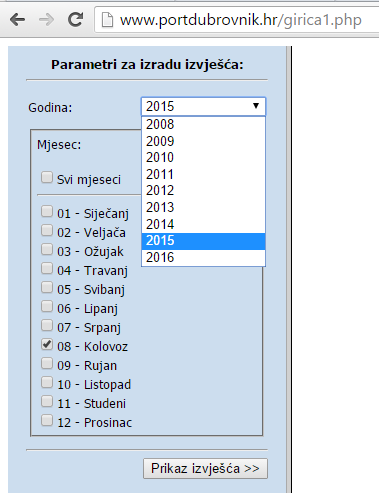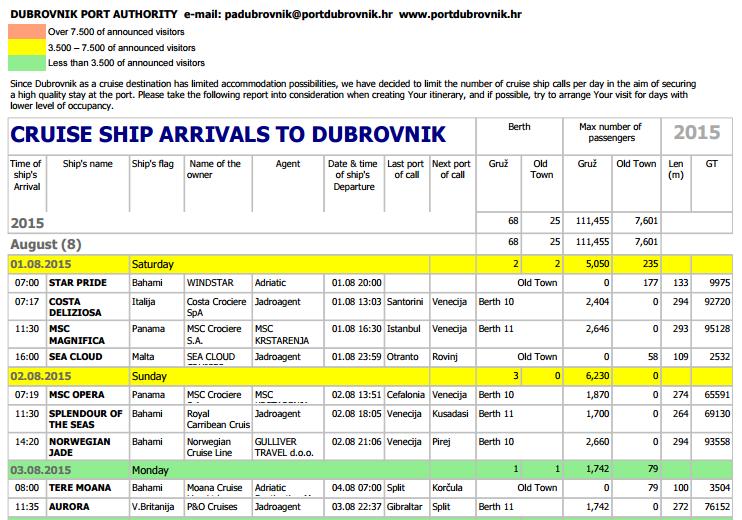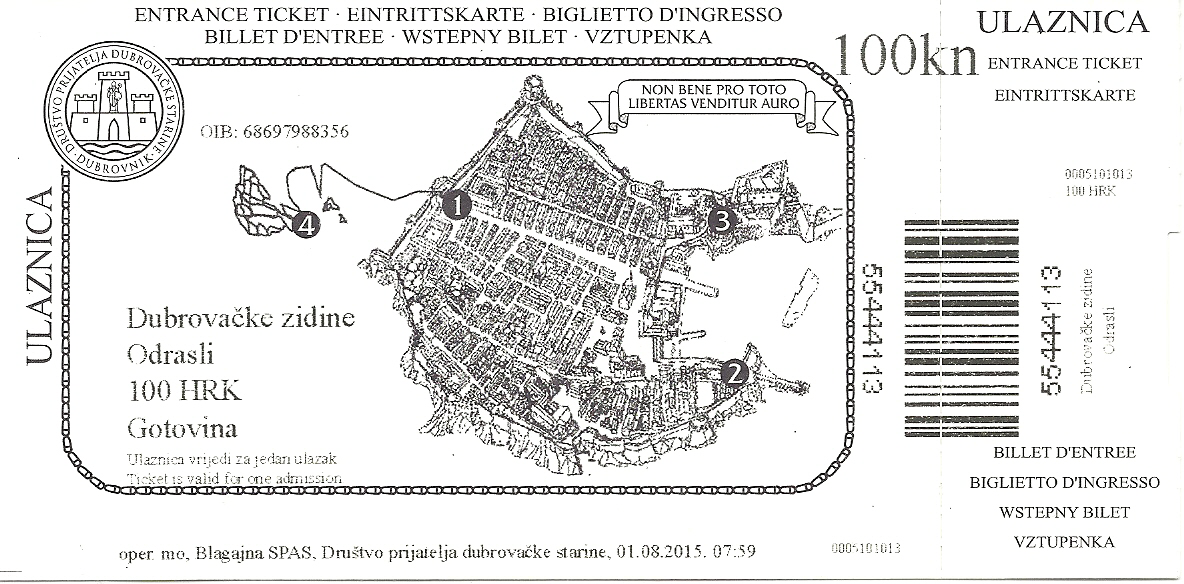At the risk of mixing popular memes…

The word ‘spectacular’ is somehow insufficient when used to describe the Old City of Dubrovnik, and, in a country rich in ancient architectural splendour and blessed with abundant natural wonders, it is still unsurprising that it is the number one tourist destination in Croatia. As reported online by CroatiaWeek “In the first 9 months of 2015 an impressive 822,542 tourists visited the famous walled city. […] On 2 October 2015 the city recorded its 3,000,000th overnight stay, hitting the number 20 days earlier than last year.”
Most visitors arrive via international flights (nearly 85% of arrivals come directly from overseas airports rather than domestic Croatian airports), and on 7th August 2015 Dubrovnik airport welcomed it’s millionth traveller of the year (see EX-YU Aviation News, always an interesting source of information on air traffic in the region).
Smaller numbers of people arrive by car, primarily by heading south through Croatia along the Jadranska Magistrala (D8, the Adriatic Highway), and also on national and international ferries to Dubrovnik’s port of Gruž.
A third group of tourists arrive by cruise ship, and their sudden mass influx can cause considerable congestion. On the 17 August 2015 pedestrian crowded at the entrances into Dubrovnik’s Old City looked like this:
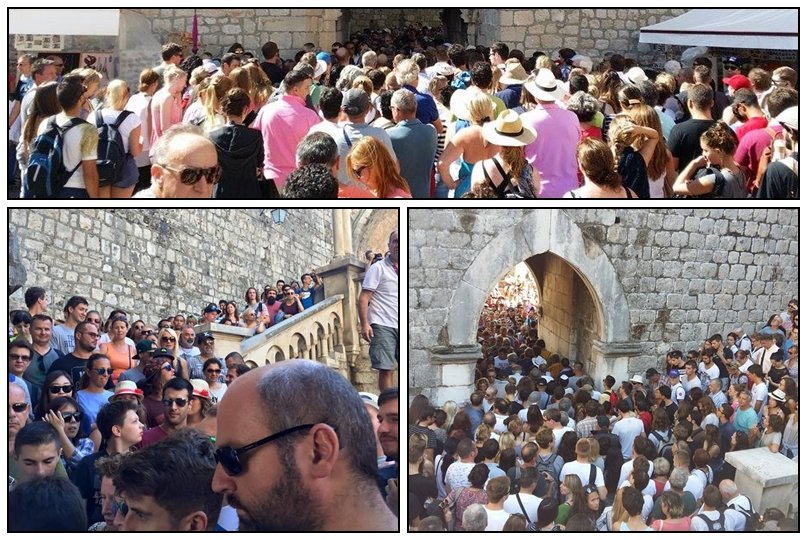
That’s a lot of people to share your experience of Dubrovnik with, but there are a couple of things you can do if you’re not a fan of crowds.
Firstly, you could just avoid visiting in July and August. This is the peak of the tourist season which runs from March until the start of November (although the City Council are trying to promote year-round tourism through such as their Project Winter).
However, for many people, especially those tied to school summers breaks, this is, of course, not possible, and in any case, you might want to be in the city for the annual Dubrovnik Summer Festival which runs from mid-July to nearly the end of August.
The second action to take in order to avoid high season crowds is to plan ahead carefully. Read up on what you really want to see the most, because there’s plenty of choice in the Old City. There are some links at the bottom of this post to the better online resources I found for Dubrovnik when planning last summer’s vacation in Croatia.
Assuming you still want to visit the Old City during high season, one of the best tools for planning the timing of your visit is provided free of charge by the Dubrovnik Port Authority, which you can access here.
All you have to do is select the year and the month of your visit…
…click on “Prikaz izvejšća”, and details of all the cruise ships scheduled in port that month will be revealed (in English).
The listing is colour-coded for quick reference identification of days when cruise ship visitor numbers are expected to be especially high (red), average (yellow) or lighter than usual (green). However, if you’re fixed to specific dates it also tells you the hour the ships dock and the time when they depart. From this information you can make a judgement about when will be the best times to avoid the city gates, busier thoroughfares and the walls, as well as when restaurants are likely to be most crowded during the day.
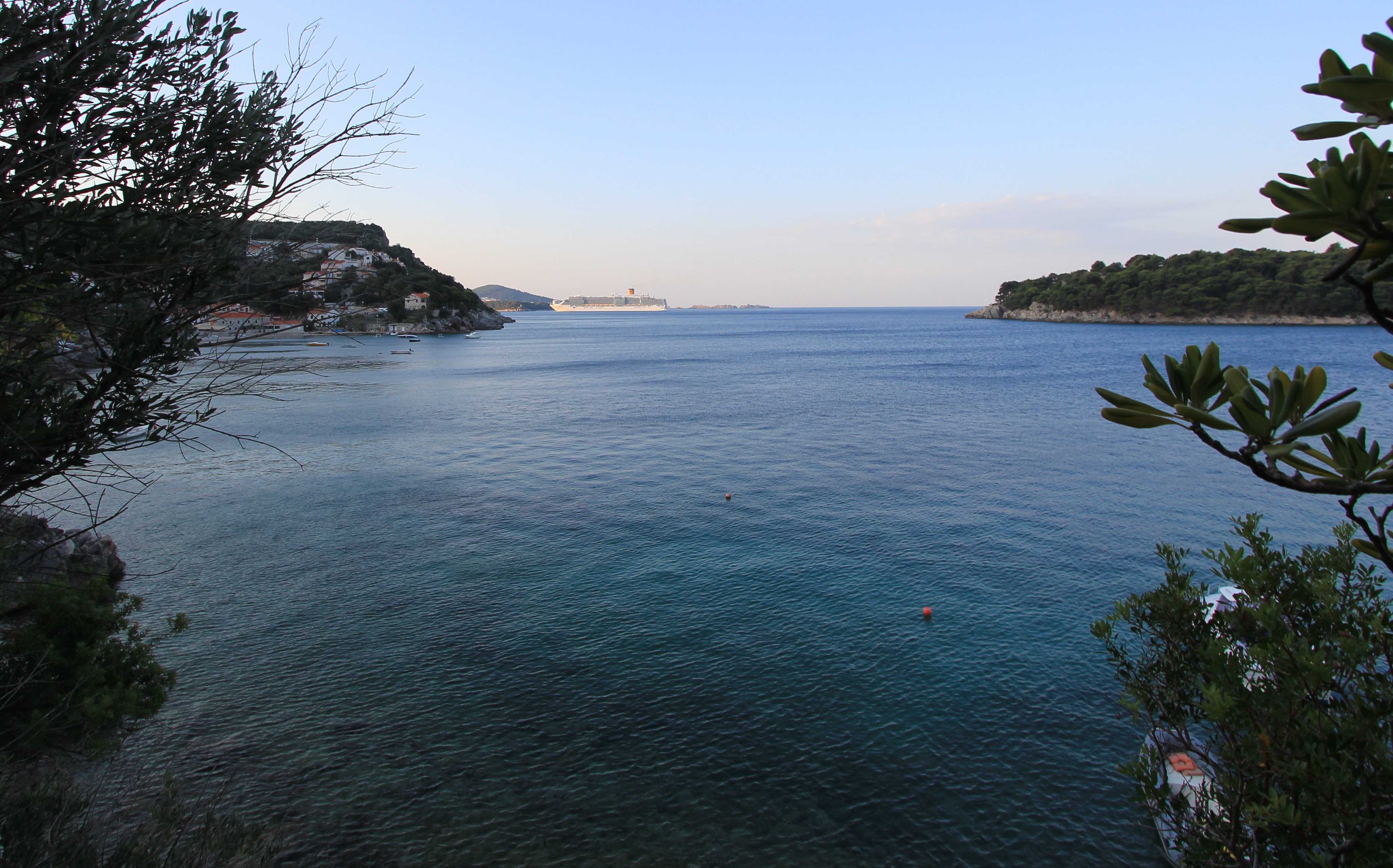
Keep in mind that whilst the Port Authority has now limited the number of cruise liners able to visit each day, that also means that there is more than enough space for docking at Gruž rather than anchoring off-shore and having to make a more time-consuming transfer to land. Rapidly disembarking passengers are only a 10 minute courtesy coach/public bus/taxi journey from the Old City.
Most cruise ship passengers will arrive at Pile Gate (it’s generally just the smaller cruise vessels that anchor in front of the Old City harbour, which means passengers are usually counted in tens or the low hundreds rather than by the thousand, and the Ploče Gate is therefore potentially quieter), so it makes sense to know in advance when the throng will be greatest here.
The following set of images demonstrate that it is possible to avoid the worst of the high season’s crowds; they were all taken before 08:00 AM on Saturday 1st August 2015.
We parked in the shade of the reasonably priced underground car park at Ulica Baltazara Bogišić (much less expensive than around the Old City walls and plenty of spaces) and walked the 450m down Zagrebačka ul. to Ul. Srednji Kono where we crossed to Ul. Iza Grada.
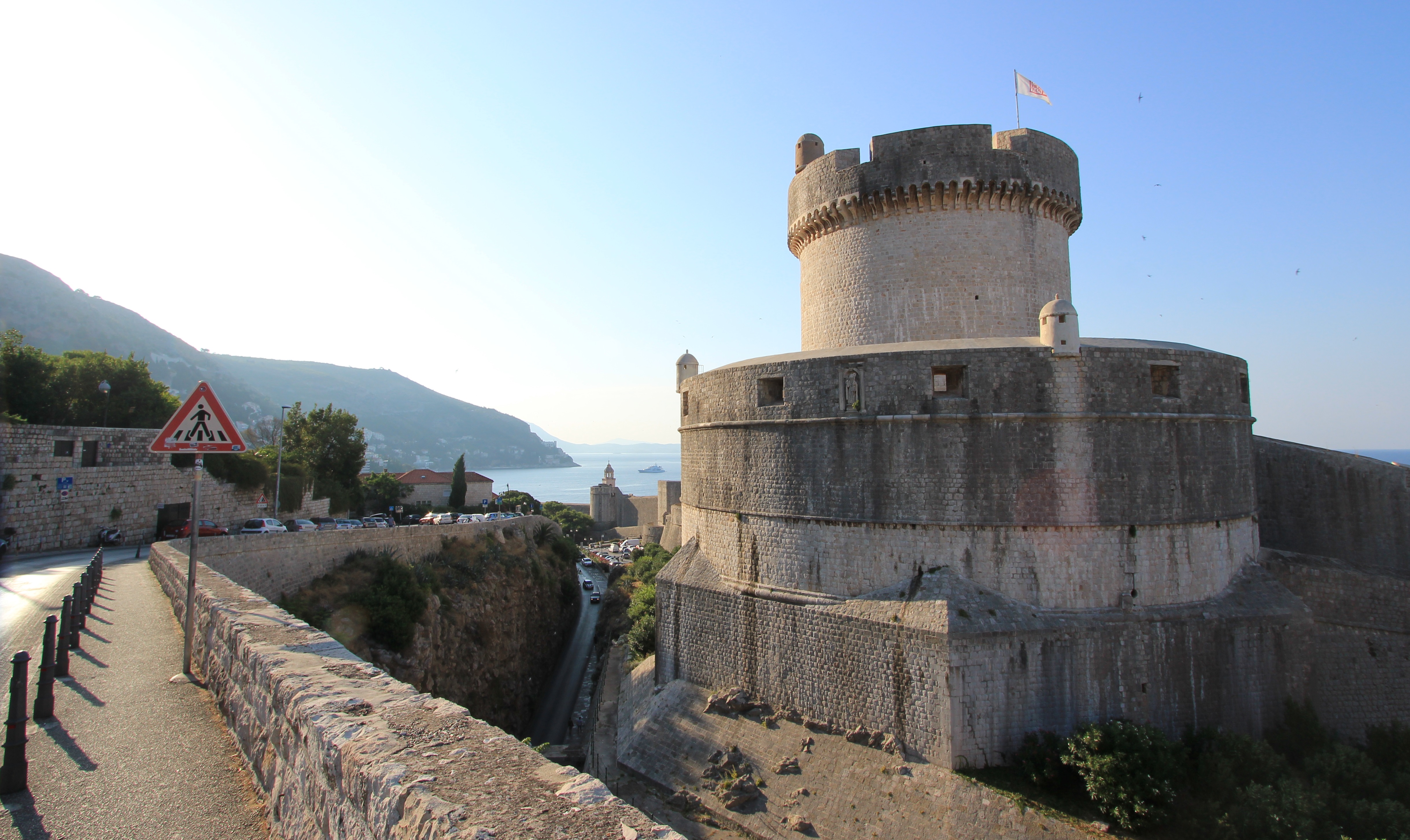
From here we continued to stroll a further 500m downhill, past Buža Gate, and round Revelin Fort to the Ploče Gates.
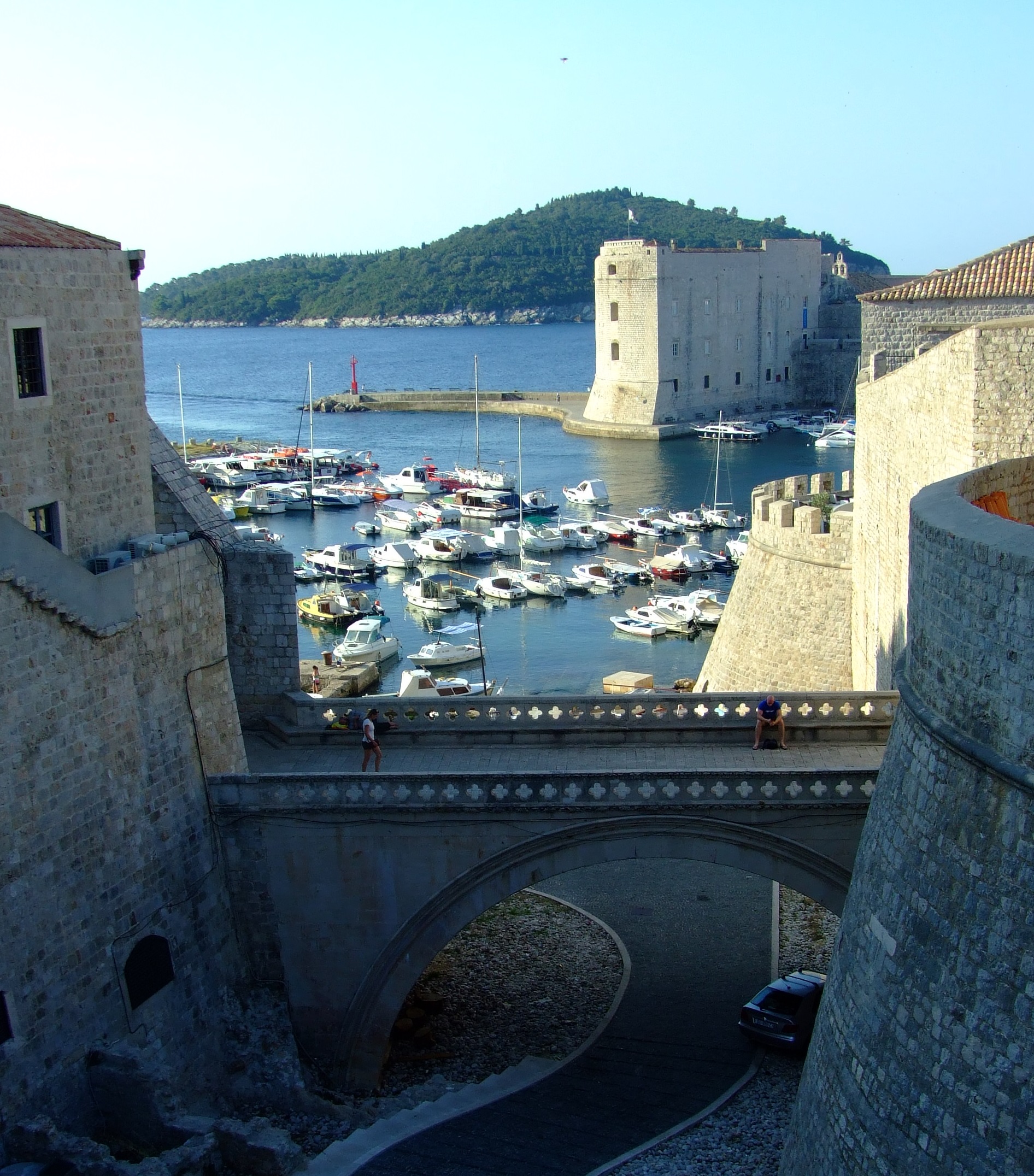
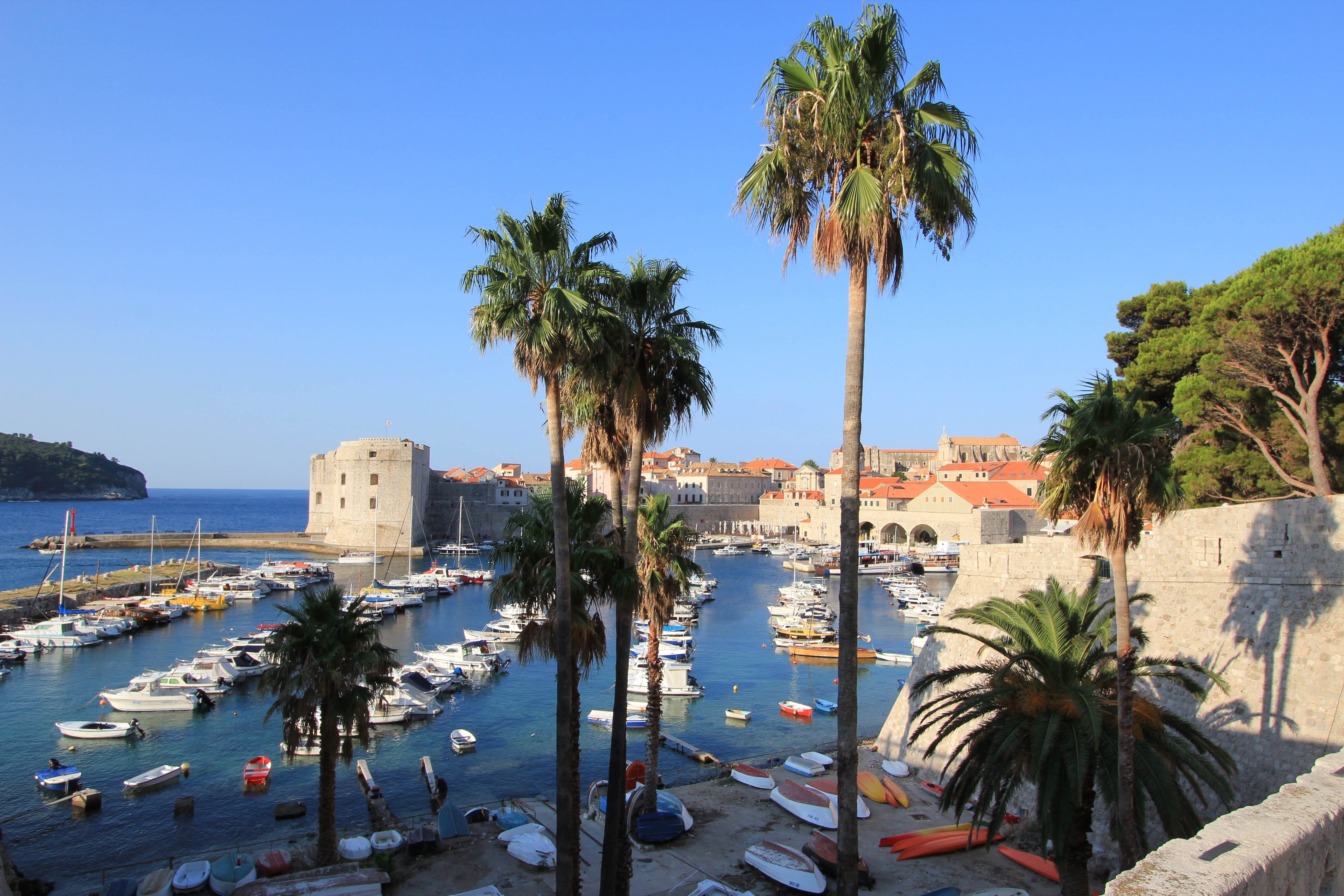
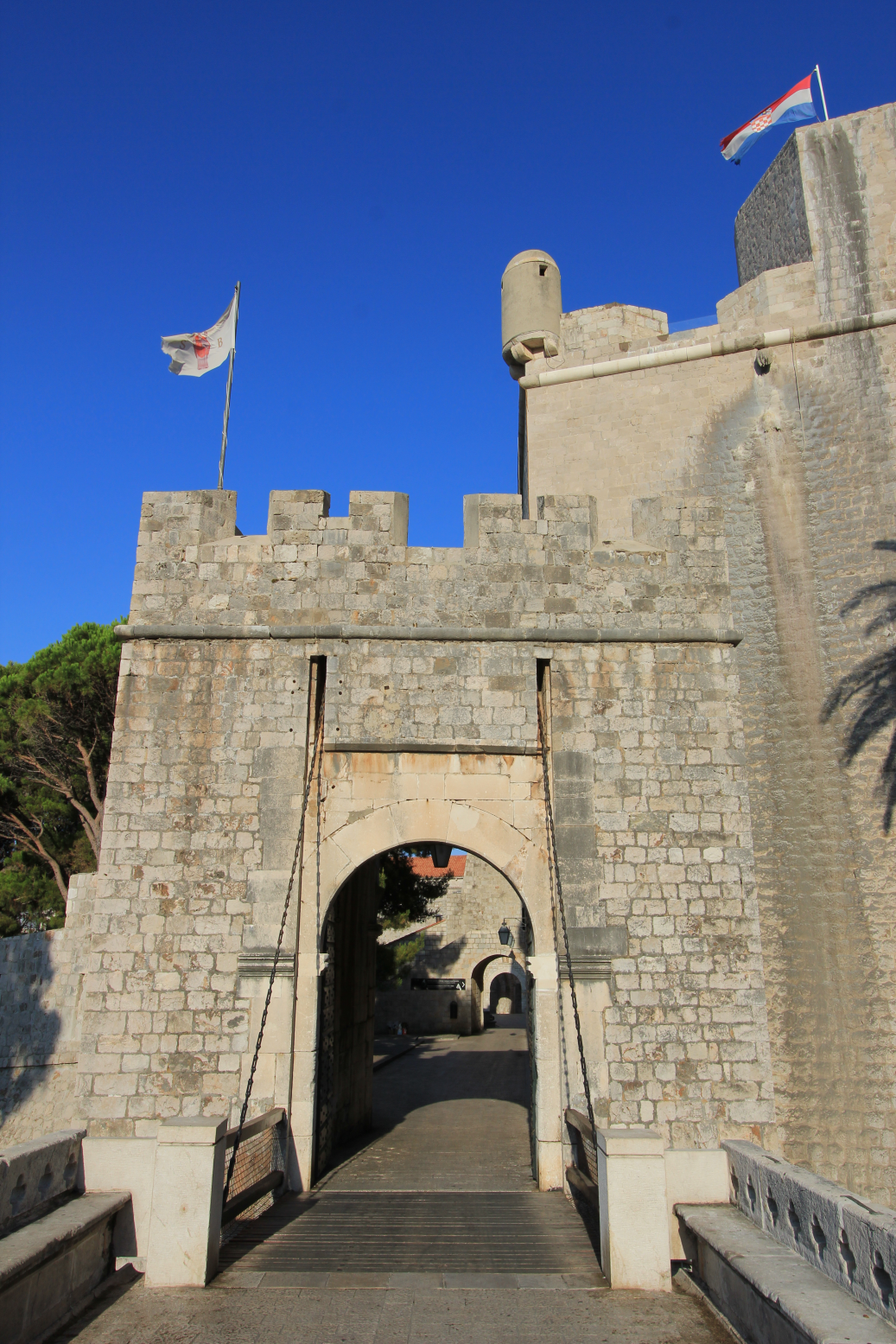
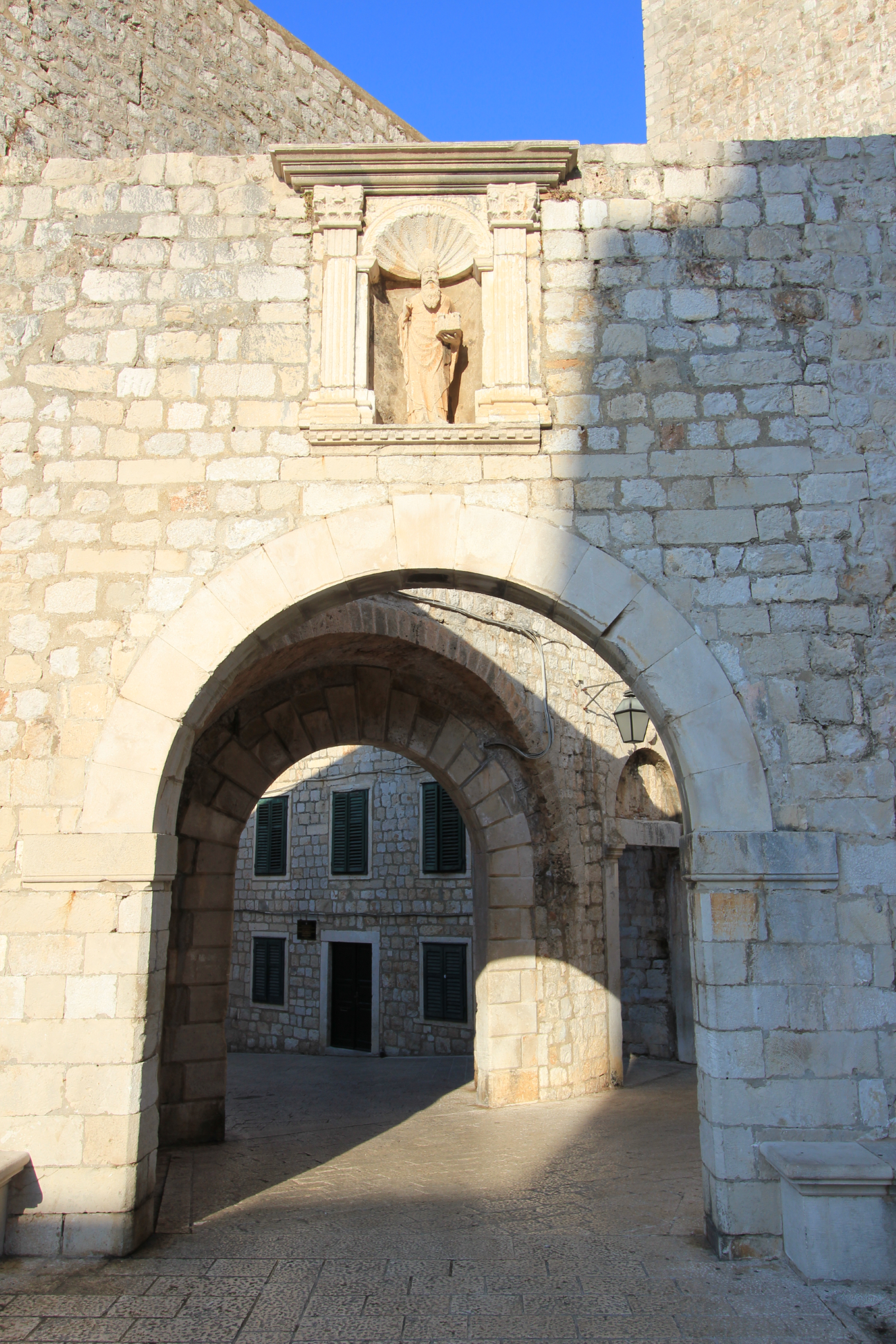
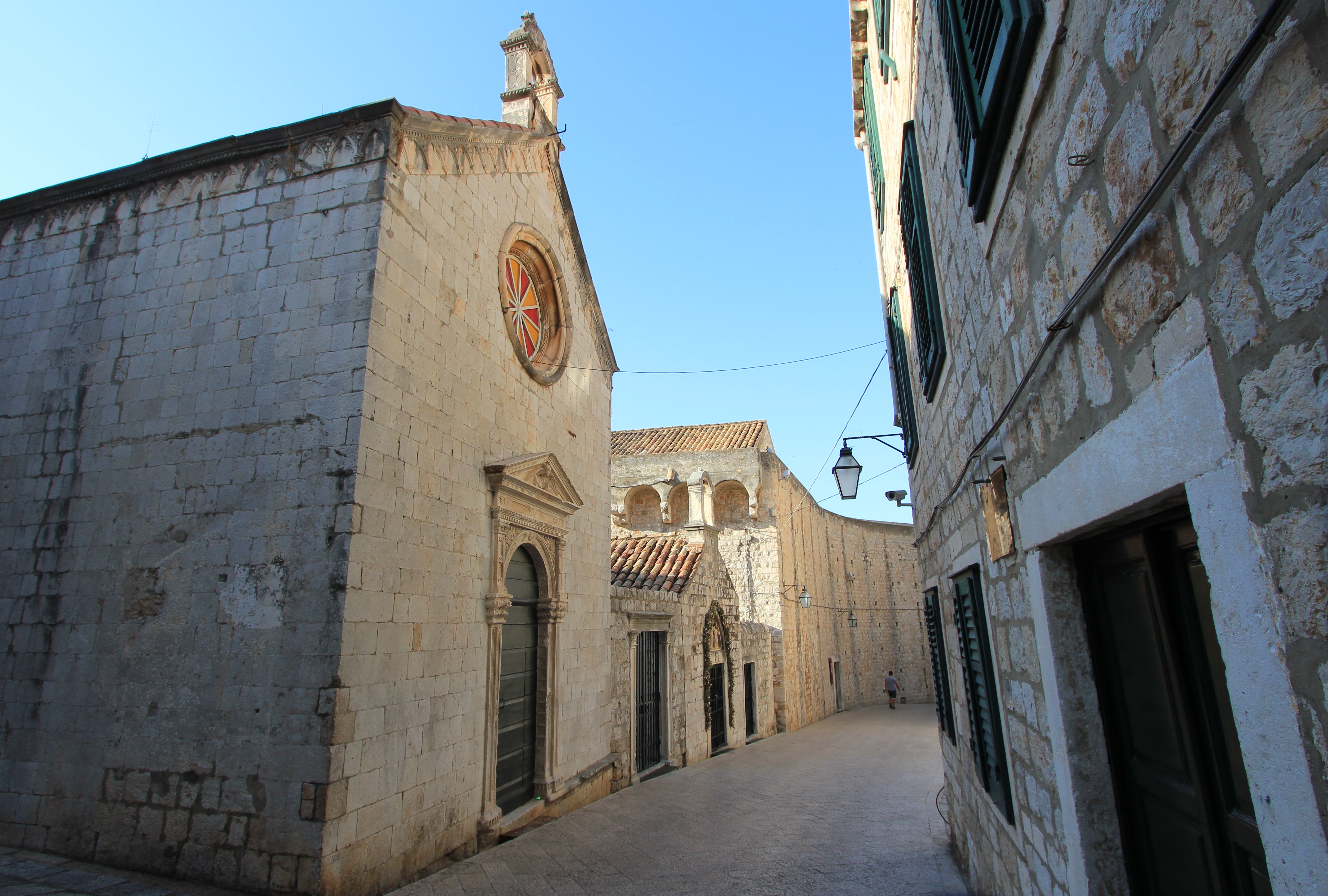
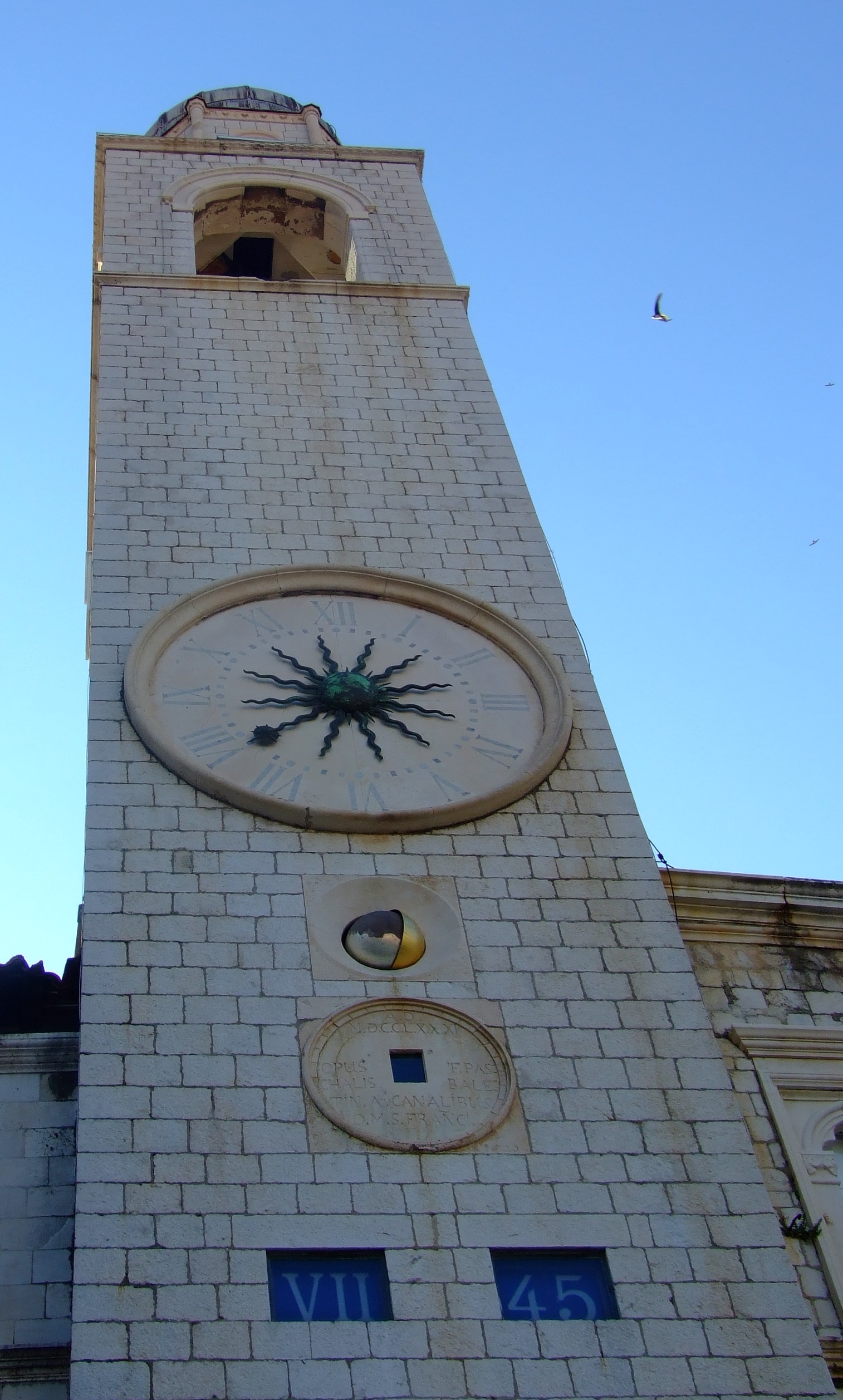
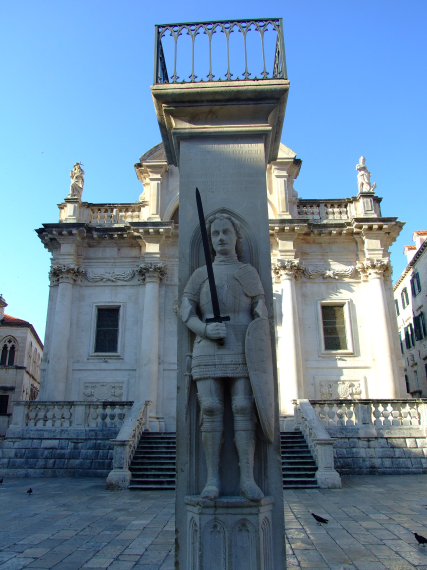
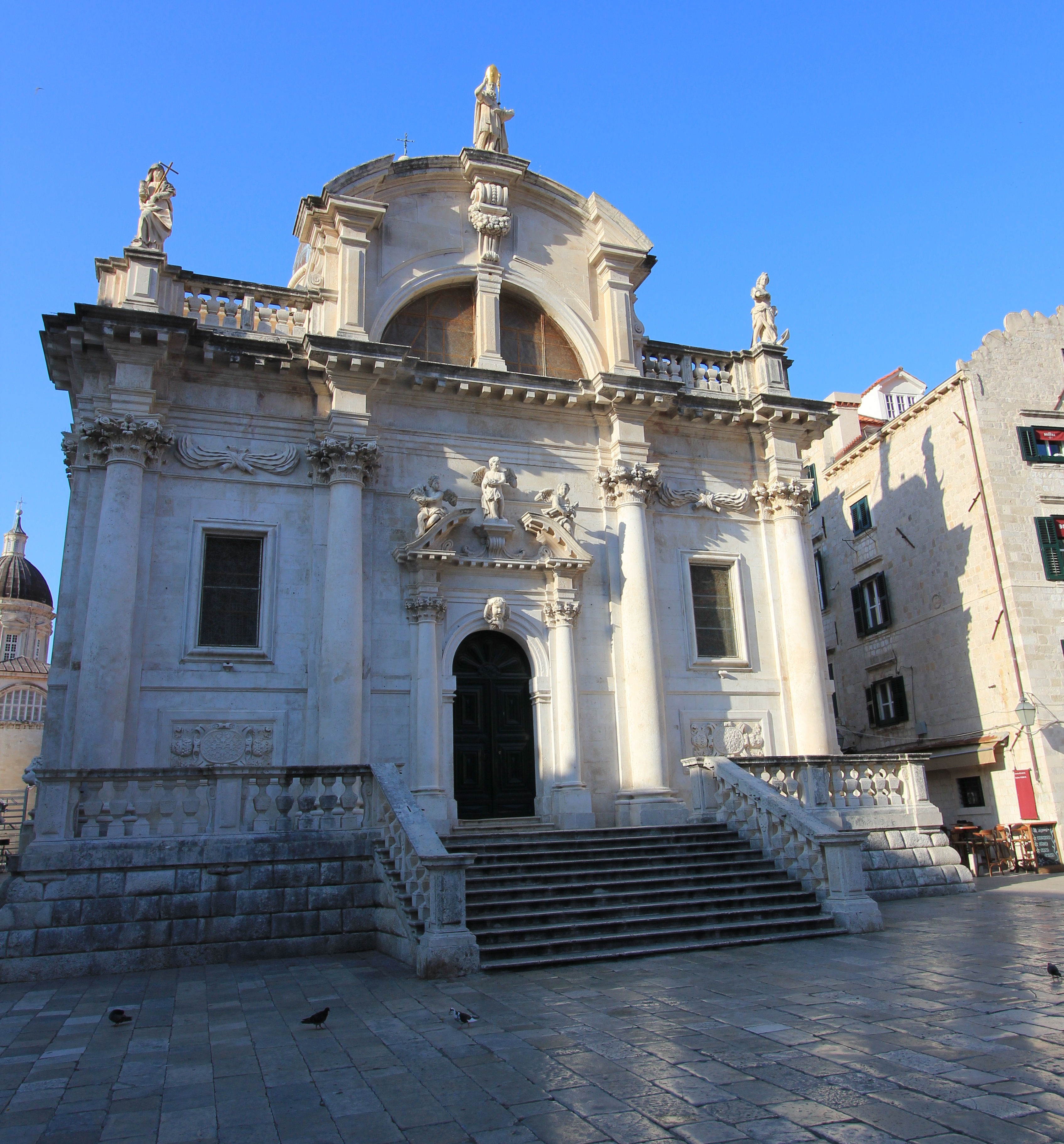
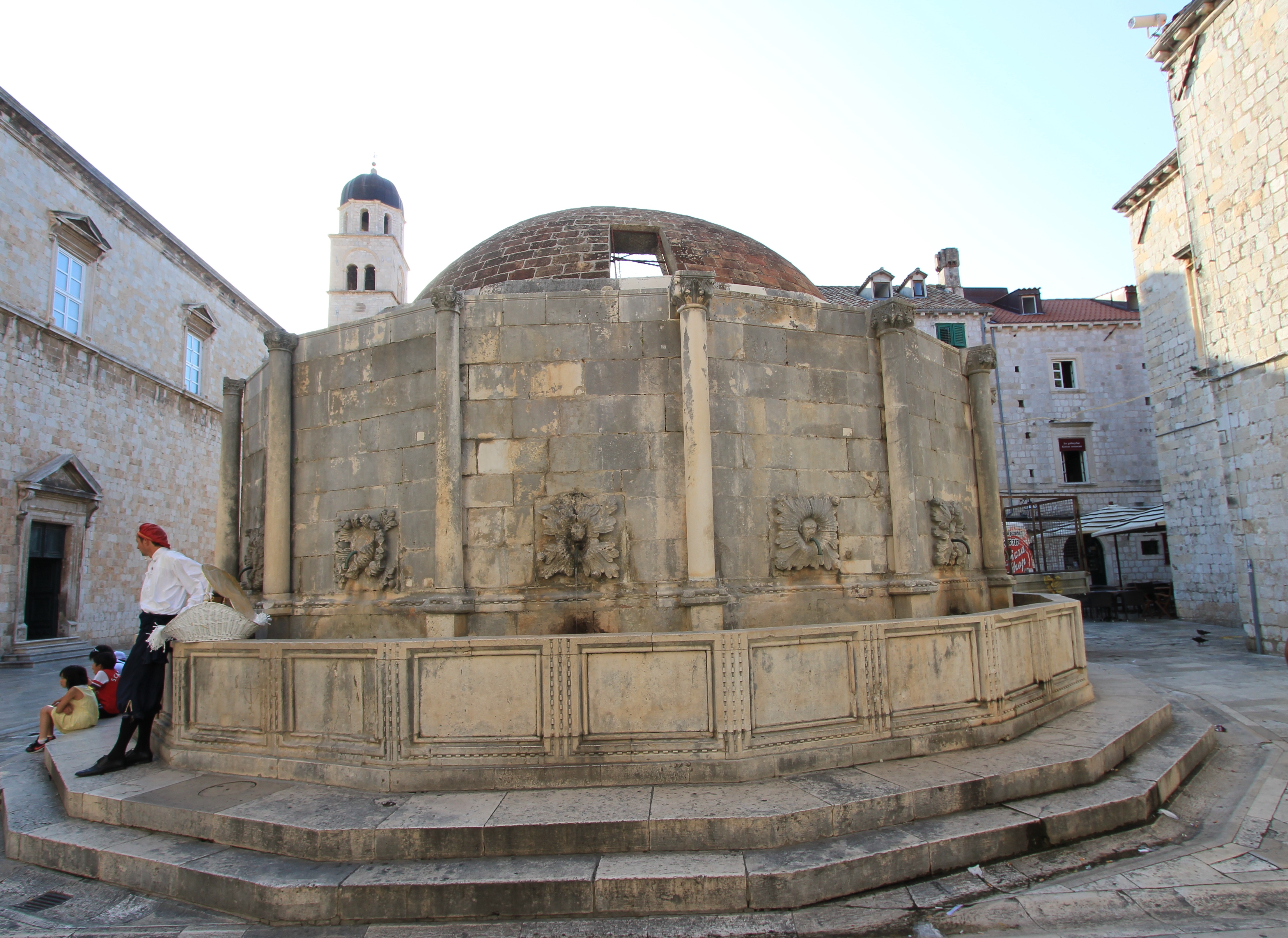
If you plan to walk the approximately 2km (1.24 miles) length of Dubrovnik’s city walls – and, if you’re physically able to do so, you really should – a little consideration of timing can also pay dividends. In the heat of the summer going as early as possible (or later in the afternoon) will make for a much more comfortable experience (there’s a reason why paramedics sit in the shade at strategic locations along the route), and once again, an early start can beat the worst of the crowds.
If you choose the early start option there are three entrance points to the main city walls, as can be seen on the ticket below.
Most people will scale the heights from the entrance just inside Pile Gate (#1 above), so you might be tempted to enter at the St. John’s Fort entrance (#2) or the St. Luke’s Fort entrance (#3). However, this of course means that whatever your pace, you’ll eventually catch up with an increasingly packed congregation of fellow sightseers.
For high season entry I’d recommend starting along the prescribed anticlockwise route at the Pile Gate when it opens (there are different opening times at different times in the year)… and not standing in the queue that will form by the gated entrance steps. You’ll need a ticket to get in (keep it safe and handy as they do occasionally check as you pass other entrances), and these are purchased from a separate office set into the wall just to the left of the Pile Gate exit. Being at the front of this queue might save you an extra couple of seconds!
Once again, it is possible to avoid high season crowds, even in the middle of summer. These pictures were all taken before 09:05 AM:
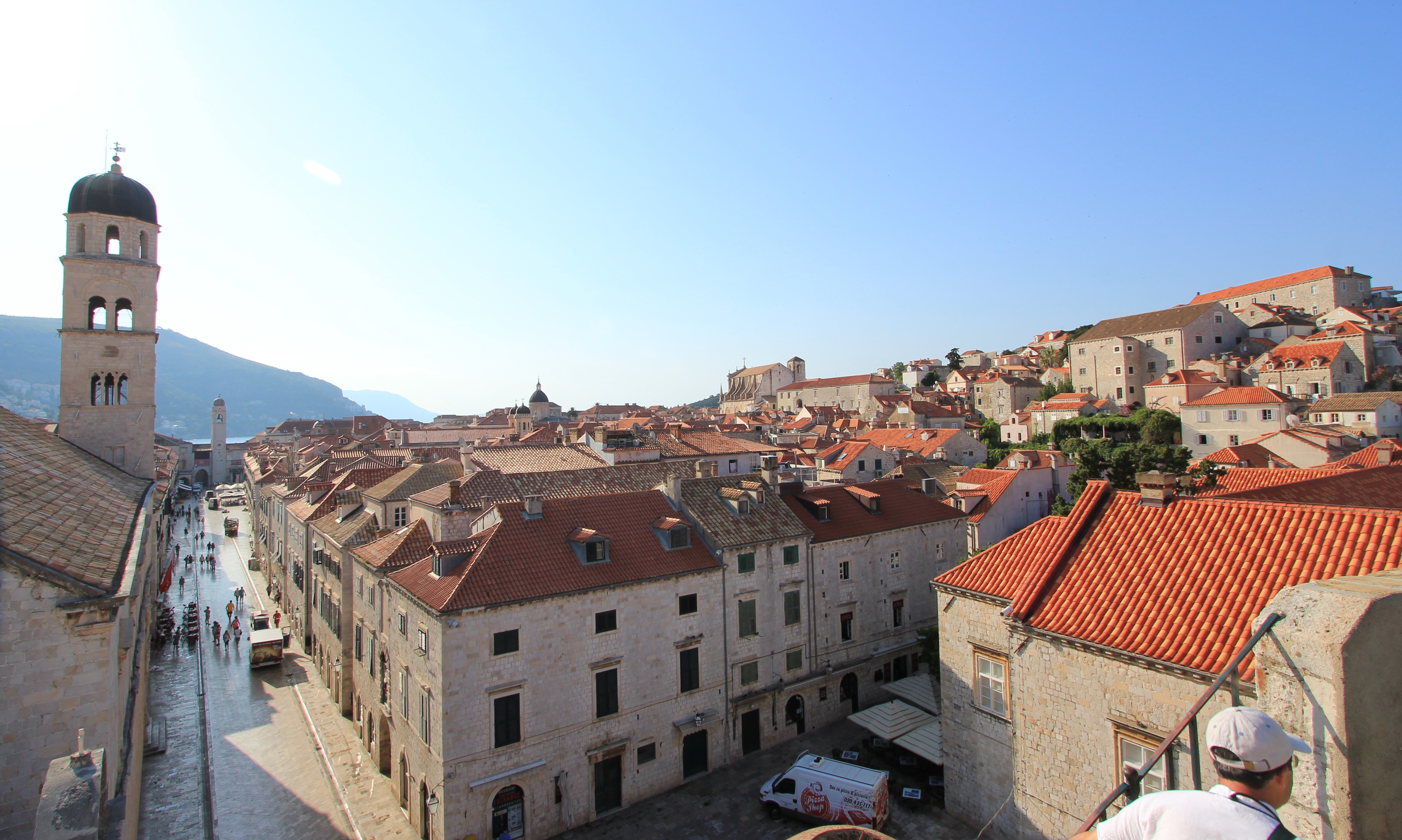
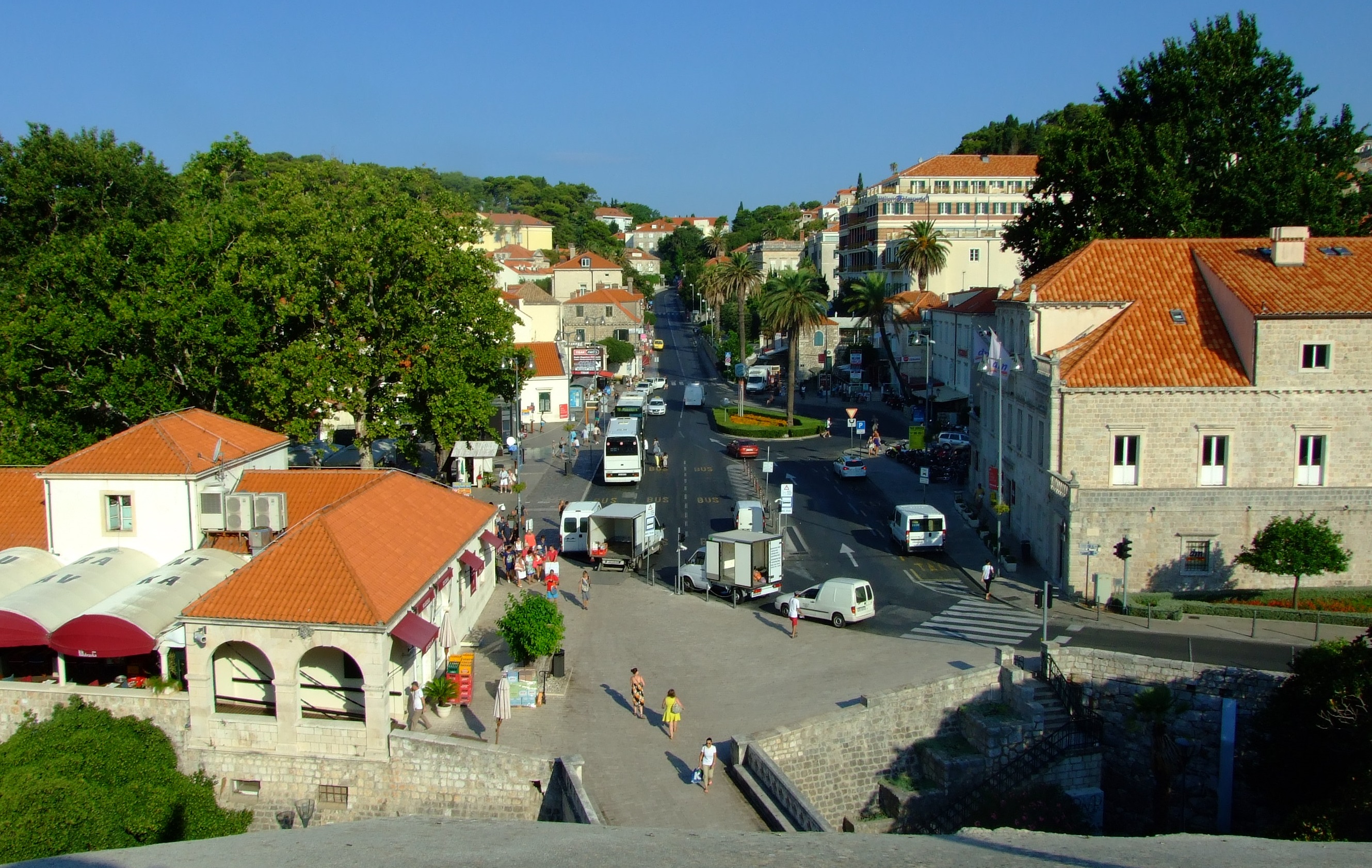
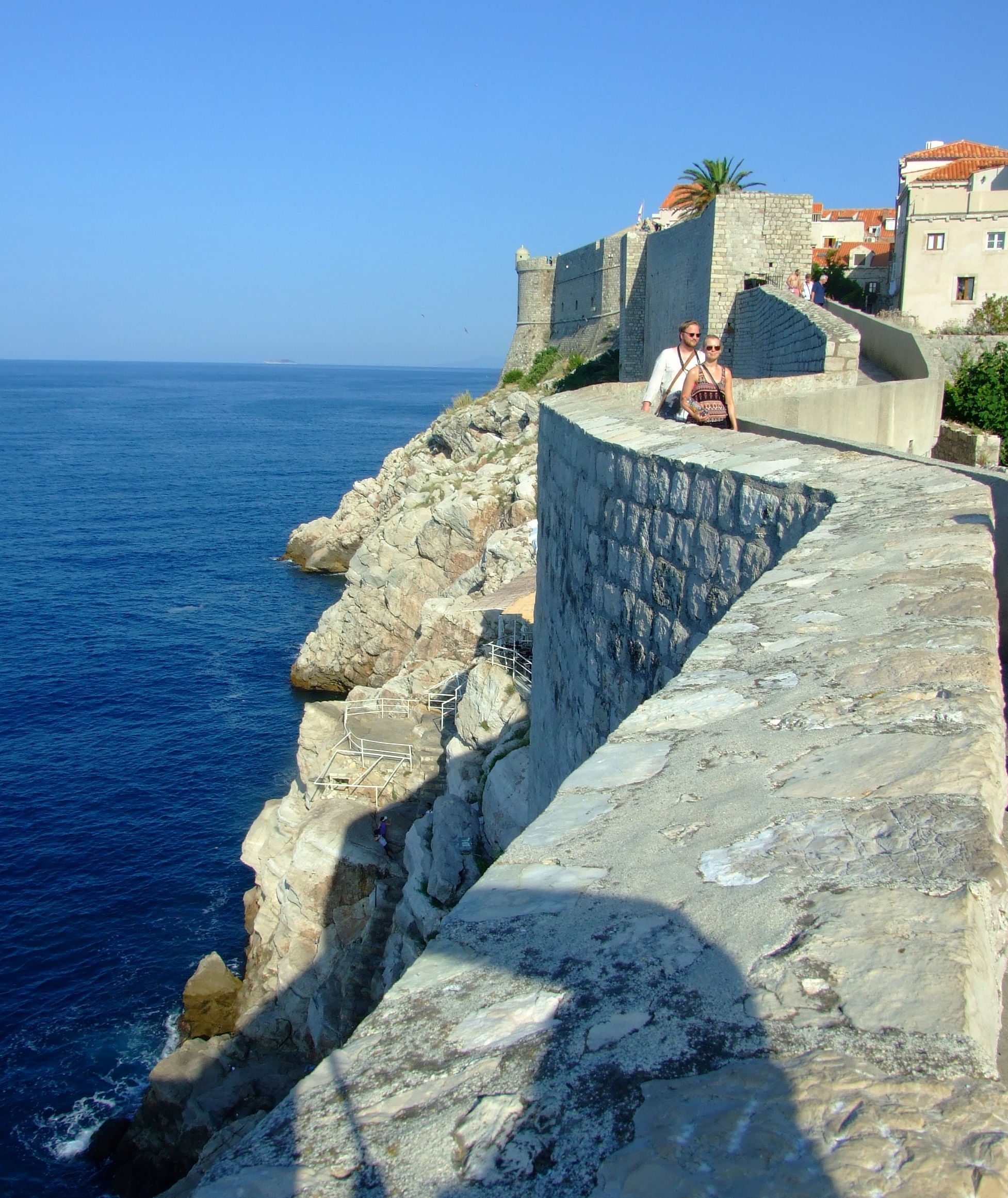
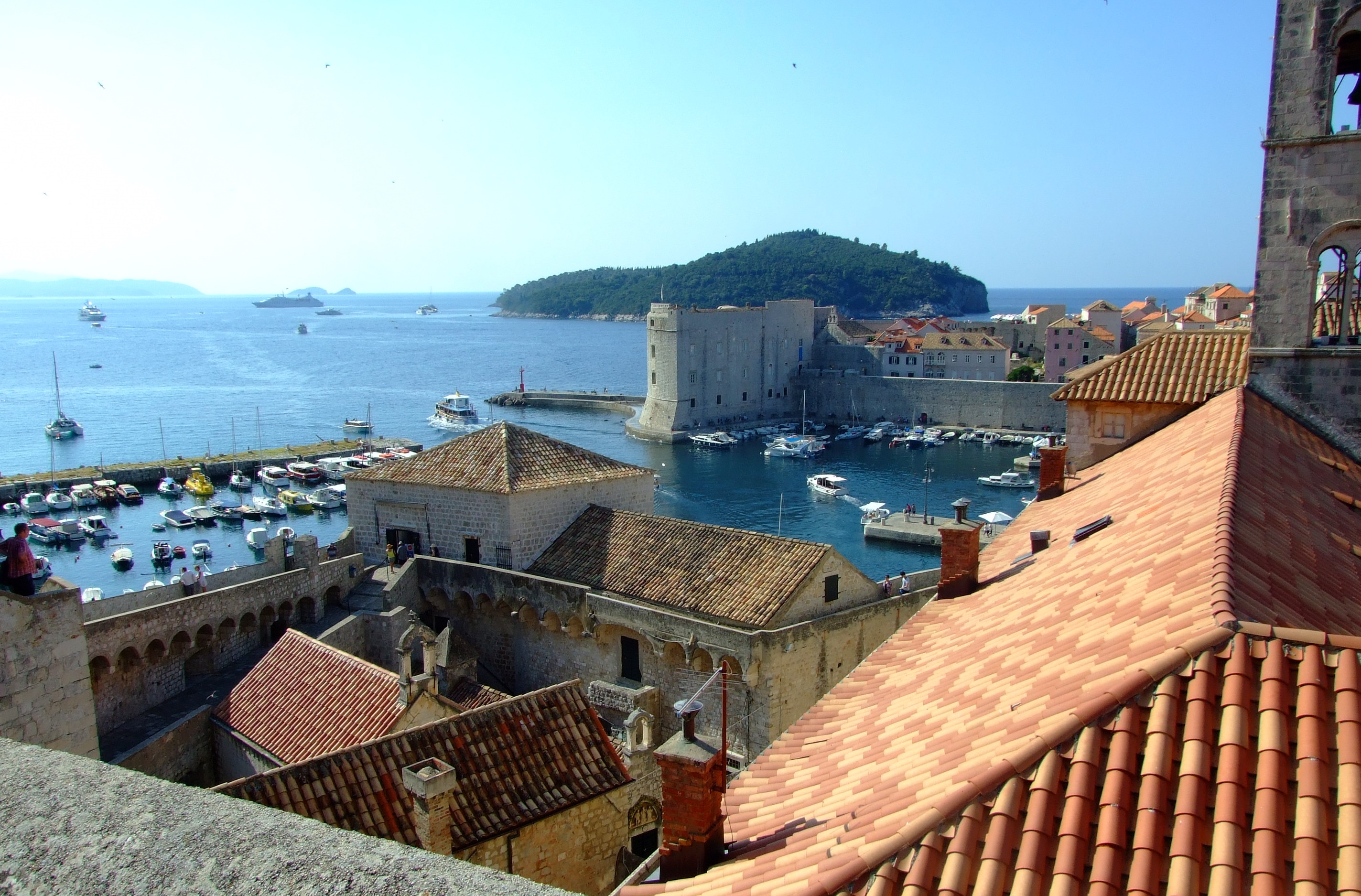
As for the rest of the Old City’s main attractions, it’s going to be pretty difficult to avoid rubbing shoulders with fellow visitors in the high season, particularly during overlapping cruise ship landings.
Side streets away from Stradun (Placa), Ul.Pred Dvorum and the Old City harbour may offer a modicum of respite, but otherwise a) be patient, and accepting of the fact that there’s a good reason why so many people want to visit this place, and b) have your midday escape options planned.
More online information.
Dubrovnikcity.com – includes an interactive map with icons linking to text pages describing many of the city’s main attractions
Dubrovnik Tourist Board – opening times and ticket prices for the Old City walls plus brief page notes on the forts and other main sites of interest.
Dubrovnik-travel.net – a clear map of the old city making the marked main attractions easy to find. Beneath the map are links to expandable pages on each of the main attractions. Hunting around this website also reveals more historical background pages.
Recommended accommodation.
Try the relaxing studios at More Beach House in Štikovica on Zaton Bay.
